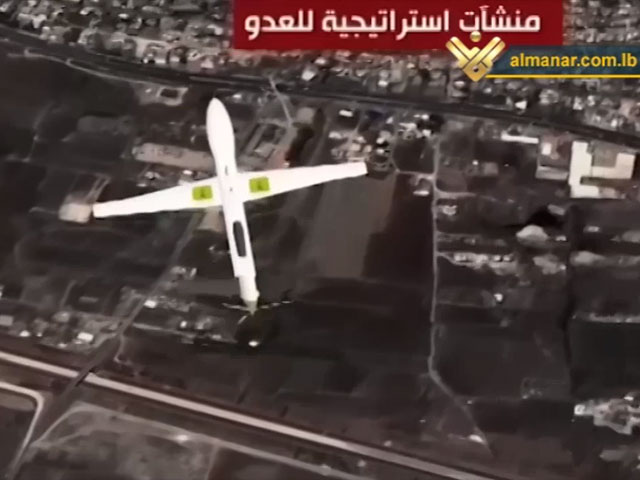On the evening of February 18, the Lebanese television channel Al-Manar aired several reports on the successful operation of a Hezbollah unmanned aircraft infiltrating Israeli airspace. Earlier, the IDF was forced to admit that Israeli air defenses failed to intercept the aircraft.
Al-Manar TV channel, owned by Hezbollah, said in a report that a Hassan unmanned reconnaissance aircraft (named not after Hezbollah leader Hassan Nasrallah, but after Hassan al-Lakis) was used for this operation. – who was in charge of special operations and military-technical equipment in Hezbollah and liquidated in Beirut in December 2013).
Emphasizing the reconnaissance, rather than attacking, nature of the operation, Hezbollah claims that the Hasan UAV penetrated 70 km deep into Israeli territory, and its reconnaissance mission lasted 40 minutes.
It is noteworthy that Al-Manar not only does not disclose the technical characteristics of the Hassan UAV, but also in the video, which was repeatedly shown in reports about the “mission” on the evening of February 18, it shows an animated image of the aircraft, identical to that which was shown for almost ten years ago – when in October 2012 the Ayub UAV (similar to the Iranian Shahed-129) penetrated Israeli airspace, but was shot down by an F-16 fighter (Hezbollah then claimed that the drone managed to transmit images of Israeli secret objects, and then these pictures were transferred to Tehran).
The Lebanese media write only that the Hasan UAV is an upgraded version of the drones previously used for such missions. At the same time, often, for example, in the Al-Mayadeen publication, it is mentioned that the day before, the leader of Hezbollah, Hassan Nasrallah, in his speech “on the day of remembrance of the martyrs” spoke about the established production of drones in Lebanon and Hezbollah’s readiness to export such products.
Apparently, the Hasan UAV was created in Iran or Lebanon using Iranian technology. The IDF has yet to comment on this.
It should be noted that the Iranian agency Fars illustrated an “analytical” article on the successful mission of the Lebanese Hassan UAV with an image of one of the early versions of the Israeli Heron UAV (Israel Aerospace Industries).
The Arabic edition of the Russian state website Sputnik, in reporting on this incident, used a picture showing a Turkish strike tactical UAV Bayraktar TB2 (the caption reads: “AFP 2022 / George Ourfalian”, although in fact this picture was taken by an AFP correspondent in Syria in February 2018).
The press service of the IDF stated that the UAV, which arrived from Lebanon on February 18 at about 11:50, was in the sky over Israel for several minutes, and then returned to Lebanon. A battery of the Iron Dome missile defense system opened fire on it (“in accordance with the protocol”), fighter jets and helicopters were raised into the air (“to patrol the area”), but the drone was not shot down.
The IDF feared that Hezbollah had launched one or more kamikaze UAVs. Therefore, the “Tseva adom” system was activated, warning of a possible air attack.
It is noteworthy that in IDF message in English, the Hezbollah aircraft was designated as “radio-controlled aircraft”. Usually, this term refers to a small radio-controlled aircraft, which is remotely controlled by an operator on the ground using a radio transmitter. Such aircraft are very maneuverable, some models can fly tens or even hundreds of kilometers.
Israeli television channel 13 explained the failure of the IDF by the fact that the Hezbollah drone was small. However, no technical specifications were given.
Hezbollah’s arsenal includes not only reconnaissance UAVs, but also Iranian-made unmanned munitions (they are used by the Yemeni Houthis in the war against Saudi Arabia and the United Arab Emirates): these are drones with a wingspan of 4.5 meters and a V-tail, equipped with rear-mounted engine with additional fuel tanks. Such a drone is capable of carrying a combat load of up to 18 kg. Experts believe that such a UAV is programmed to strike at a specific point (at a certain latitude and longitude), and its range can reach 1,500 kilometers. Recently, two Iranian UAVs exploded in the skies over Iraq. Israeli media wrote that an attempt to attack Israel may have been foiled.

[…] dari Observatorial, Hizbullah mengklaim bahwa UAV Hassan masuk sejauh 70 km ke dalam wilayah Israel untuk misi […]